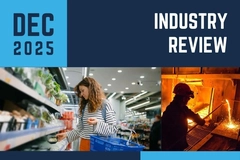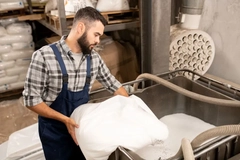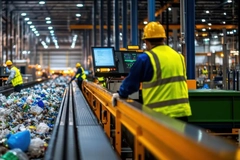McKinsey survey identifies recyclability, glass and paper as top packaging choices

Recyclability is considered the “most critical” sustainability feature of packaging, according to a recent survey by McKinsey & Company. The report highlights that while there is no single material deemed the most sustainable, glass and paper ranked as top choices across all surveyed countries.
The global management consultancy firm’s “Sustainability in Packaging 2025: Inside the Mind of the Global Consumer” survey involved more than 11,000 respondents from 11 countries, representing four continents and 66% of global GDP.
The survey considered consumer preferences across product categories, packaging materials, and demographic insights. It highlights that while sustainability concerns remain less important than other packaging factors, sustainability “continues to be a critical industry-shaping trend for the packaging value chain.”
Recyclability is “critical”
The survey’s key finding reveals that recyclability is considered the most important feature of packaging. It highlights that all packaging features that contribute to circularity — such as recycled content or reusable solutions — rank in the top four most important sustainability features in every country except India.
Respondents in nine out of 11 surveyed countries also indicated that bio-based packaging is the least important factor in the packaging solution.
Paper ranked in the top three materials for every country in the survey.“These commonalities may reflect a relatively consistent level of familiarity with these concepts across countries; most consumers have a clear understanding of the benefits of recycling but may have less information about bio-based technologies,” says the survey.
“No undisputed leader” for packaging materials
In addition, the report reaffirms the message that “no single packaging substrate — be that glass, metal, paper, or plastic — is the undisputed leader across every attribute of packaging sustainability.”
It finds that each material has disadvantages and advantages depending on the application type, and no conclusive material ranks above others.
In the 2025 survey, glass and paper ranked in the top three for every country in the sample. PET bottles ranked second as the most sustainable packaging type in Sweden and Japan.
The report explains: “Respondents in the countries with the highest PET collection rates — Germany, Sweden, and Japan have collection rates of more than 80 %, for example — all ranked PET in the top three, while the countries with the lowest collection rates (such as the US, with a rate of 33%) rank PET the lowest.”
Young consumers drive sustainability
An additional finding from the report indicates that younger consumers (Gen Z and Millennials) are willing to pay more for sustainable packaging.
It found that 8% of German consumers are willing to pay “a lot more” for sustainable packaging. Specifically, 25% of high-income millennials and 9% of low-income millennials are likely to buy sustainable packaging products.
“These differences in willingness to pay have important implications for companies bringing innovative sustainable packaging to market at higher price points. The report concludes that identifying the segments and consumer groups willing to pay more will be critical for success,” the report shares.
Price and quality remain essential
 Packaging price and quality remain the most important product characteristic.The report also notes that price and quality of packaging remain the most important product characteristics that influence consumers’ purchasing decisions, with price “even more important when compared with previous years.”
Packaging price and quality remain the most important product characteristic.The report also notes that price and quality of packaging remain the most important product characteristics that influence consumers’ purchasing decisions, with price “even more important when compared with previous years.”
Moreover, food safety and shelf life are the most important packaging characteristics influencing consumers’ purchasing choices. It further highlights that consumers regard packaging producers and brand owners — rather than themselves — as responsible for creating sustainable packaging solutions.
In a previous McKinsey report, US consumers ranked packaging quality, price, and convenience higher than environmental impact. It also found that food safety and shelf life are essential to consumers, while packaging appearance fell in importance.










